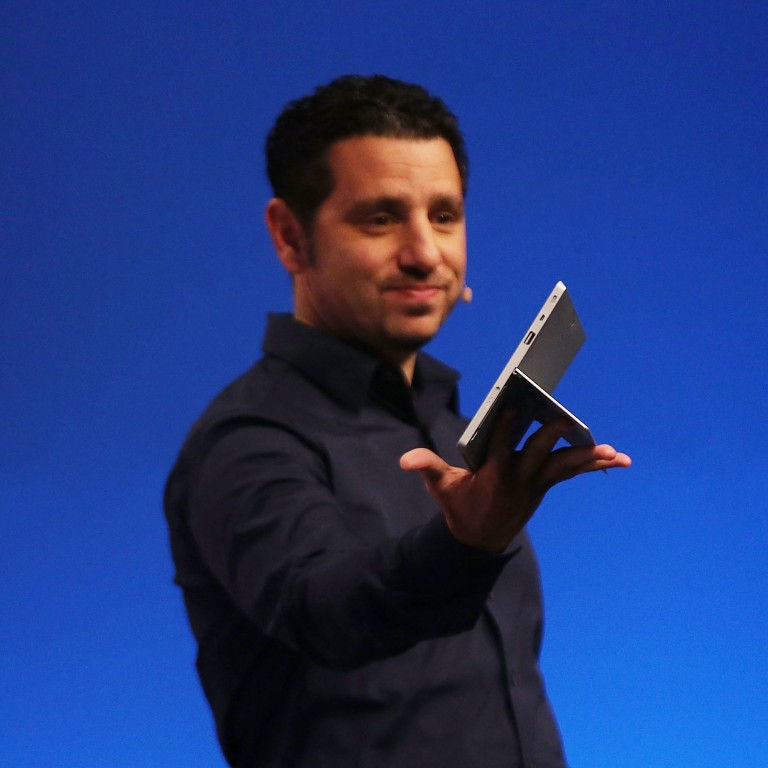
Microsoft unveils new Surface, fixes shortcomings
Microsoft has refreshed its Surface tablet computers, giving them longer battery life and better comfort on laps as the software giant continues its transformation into a devices and services company.
The company said it tried to address many shortcomings of the first-generation Surface models, sales of which have been slow. Microsoft needs to boost its tablet business to make up for sales declines in traditional desktop and laptop computers. IDC is forecasting a nearly 10 per cent decline in PC shipments this year. The research firm also said tablets will outsell traditional PCs in the last three months of the year.
The new tablet models come with a better built-in kickstand so they can rest more firmly on users’ laps while they sit on the couch. Microsoft is also making a docking station and a wireless mouse for business customers who need the mobility of tablets but also desire the traditional ways of using computers while in the office.
“We’ve definitely gotten a year smarter,” Brian Hall, general manager of sales and marketing for Surface, said in an interview.
The redesigned Surface tablets come at a time of transition for Microsoft. Earlier this month, Microsoft struck a deal to acquire Nokia’s phone and services business for US$7.2 billion. The company is also searching for a new CEO to replace Steven A. Ballmer, who announced last month that he plans to retire within the next year.
The Surface Pro 2 is targeted at professionals who want the full power of a laptop in a tablet-style device. With a starting price of US$899, the Pro 2 uses a full version of the upcoming Windows 8.1, meaning it can run any program written for Windows desktops and laptops.
The Pro 2 promises 75 per cent more battery life than the debut Pro model, which came out in February. Microsoft, which did not specify the number of hours of expected use, said the improvement comes partly from the use of Intel’s Haswell chip, which uses less energy. There’s also an optional Power Cover accessory that extends battery life even further.
A cheaper model, Surface 2, offers a 25 per cent improvement in battery life, which means it can get up to 10 hours of use. It also has a better screen compared with last October’s Surface RT. It uses Windows RT 8.1, meaning it can run only apps specifically designed for it. Microsoft said it now has 100,000 apps, or 10 times what was available last year. Like other RT tablets, Microsoft is including a version of its Office software for free with the Surface 2. But now, the package will have the Outlook email and calendar program, not just Word, Excel and PowerPoint.
Microsoft is selling the Surface 2 starting at US$449 and will continue to offer last year’s Surface RT for US$349.
The Surface 2 and the Surface Pro 2 will come with 200 gigabytes of free online storage through SkyDrive for two years, as well as free calls and Wi-Fi hotspots through Skype for a year. The new tablets will go on sale October 22, a few days after Microsoft releases its 8.1 update to its Windows 8 operating system on October 17. The screen on both new models remains at 10.6 inches (26.9 centimeters), measured diagonally.
Keyboard covers will cost extra: US$120 for a Touch Cover 2, which has working, printed keyboard on the inside surface but whose keys don’t move when pushed, and US$130 for Type Cover 2, which have keys that move. A new Power Cover with a built-in spare battery will cost about US$200 when it comes out early next year.
A US$200 docking station also will come out early next year and will work only with Pro models, including the older one already out. Hall said Microsoft chose not to make the Pro 2 smaller so that accessories would be compatible.
In an interview, Hall said the company will fine-tune its marketing strategy by showing specific things that the Surface can do in ads. Last year’s ads, he said, tried to create an energetic feeling, but failed to show consumers what the tablets did.
Hall also said Microsoft won’t try to compete directly with Apple’s popular iPad. Microsoft is positioning the Surface as ideal for tasks people normally tackle on laptops, such as creating documents and editing movies. That’s also the reason the Redmond, Washington, company opted not to make models with smaller screens, Hall said, as those tend to be used more for entertainment and content consumption.
“We have to get people to think of it as a little different (from) an iPad,” he said. “iPads are great, but these are a different device. ... We’re building a product for a different set of people.”
Associated Press

